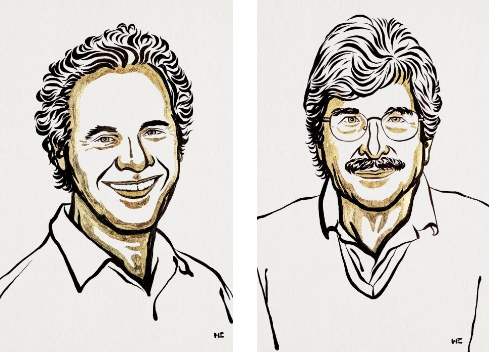
The 2024 Nobel Prize in physiology or medicine: Discovery of MicroRNA
The 2024 Nobel Prize in Physiology or Medicine has been jointly awarded to scientists Victor Ambros and Gary Ruvkun for discovering microRNA and its role in post-transcriptional gene regulation.
The information stored within our chromosomes is like an instruction manual for our cells. Every cell in the body contains the same chromosomes and, thus, an identical set of instructions. Despite this, different cell types have distinct appearances and characteristics. Consider a nerve cell and a skin cell: they differ significantly in form and function, even though they carry the same genes and instructions. So, how does this happen? The answer lies in gene regulation, which ensures that only certain instructions are followed in different cell types, depending on their location and role within the tissue.
Genetic information is stored in DNA, which serves as a blueprint for producing a “messenger” molecule: mRNA. Messenger RNA carries this code to the cellular machinery responsible for producing proteins. During the expression of genes into proteins, several cellular mechanisms ensure that the process runs smoothly. These molecular mechanisms work together to precisely control when, where, and how much of a gene will be expressed in response to environmental and cellular signals. Disruptions in gene regulation can lead to serious diseases, such as cancer, diabetes, or autoimmune disorders, which is why scientists have long focused on understanding the regulation of gene activity.
In the 1960s, specialised proteins called “transcription factors” were found to bind to specific regions of DNA, controlling the flow of genetic information by determining which mRNAs would be produced. For a long time, researchers believed this was the key to solving the puzzle of gene regulation, having identified thousands of transcription factors since.
However, in the late 1980s, Victor Ambros and Gary Ruvkun, postdoctoral fellows in the laboratory of Robert Horvitz (who won the Nobel Prize in 2002), were studying mutated genes in Caenorhabditis elegans, a tiny roundworm. They aimed to identify genes that control the timing of genetic programmes to ensure various cell types develop at the right time.
Although they carried out their research independently, Ambros and Ruvkun observed similar phenomena and decided to compare their results. Both had seen that an unusually short RNA molecule was responsible for inhibiting protein production. They had uncovered a new principle of gene regulation, mediated by a previously unknown RNA molecule: microRNA.
MicroRNAs (miRNAs) are small, non-coding RNA molecules, typically only 20-24 nucleotides long (other non-coding RNA molecules also play roles in gene regulation, but they tend to be much longer). They bind to messenger RNA (mRNA) and either inhibit protein synthesis or trigger the degradation of mRNA. Through this regulation, miRNAs control the production of proteins essential for many biological processes, including cell growth, development, differentiation, and programmed cell death known as apoptosis.
It is now known that the human genome codes for over 1,000 miRNAs. A single miRNA can regulate the expression of multiple genes, while a single gene may be regulated by several miRNAs.
Since their discovery, miRNAs have been linked to numerous diseases, including cancer, due to their regulatory roles. Research into miRNAs has helped scientists better understand complex genetic regulation mechanisms, leading to new therapeutic strategies. Their ability to target specific genes makes them a key area of interest for developing treatments for diseases with genetic underpinnings.
This ground-breaking discovery has expanded our understanding of RNA biology. The research of Ambros and Ruvkun laid crucial foundations that ultimately paved the way for the development of mRNA vaccines, which have revolutionised the field of immunisation, particularly during the COVID-19 pandemic.
Victor Ambros is currently a professor of natural sciences at the University of Massachusetts Medical School, while Gary Ruvkun is a professor of genetics at Harvard Medical School.
REFERENCES
- 1. https://www.nobelprize.org/prizes/medicine/2024/press-release/
- 2. Lee RC, Feinbaum RL, Ambros V. The C. elegans heterochronic gene lin-4 encodes small RNAs with antisense complementarity to lin-14. Cell. 1993;75(5):843-854. doi:10.1016/0092-8674(93)90529-y
- 3. Wightman B, Ha I, Ruvkun G. Posttranscriptional regulation of the heterochronic gene lin-14 by lin-4 mediates temporal pattern formation in C. elegans. Cell. 1993;75(5):855-862. doi:10.1016/0092-8674(93)90530-4
